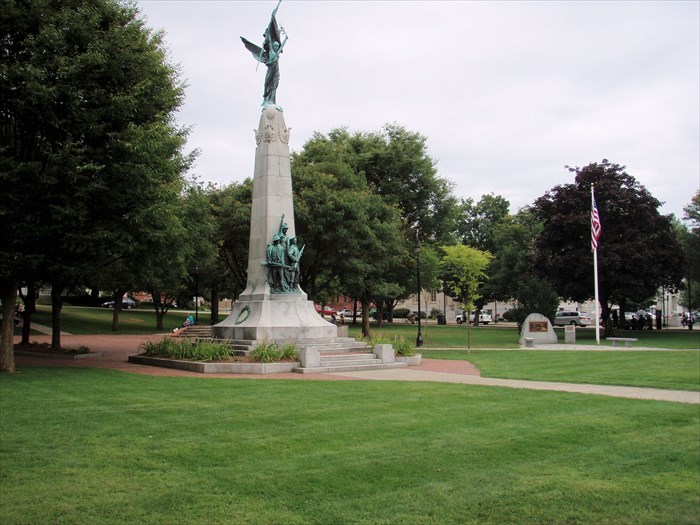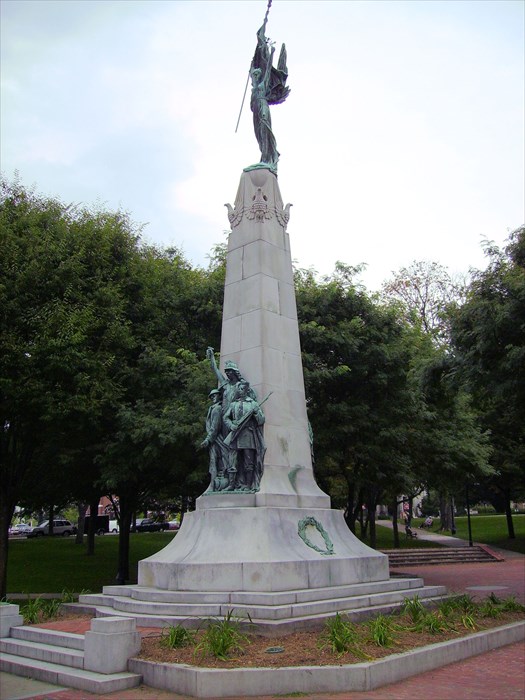
Columbia with Sailor and Doughboy - Manchester, NH
Posted by:  silverquill
silverquill
N 42° 59.536 W 071° 27.619
19T E 299434 N 4762893
This 43 foot-high obelisk monument was created in 1929 to honor veterans of World War I. It is the centerpiece of the Victory Park in Manchester, New Hampshire. On its side is the figure of mythic Columbia with a sailor and a doughboy.
Waymark Code: WME0MC
Location: New Hampshire, United States
Date Posted: 03/18/2012
Views: 4
The use of Columbia to represent the United States goes back at least until 1776 when Phillis Wheatley mentioned Columbia in her poety. The Freedom Statue on the U.S. Capitol is one of the earliest representations, though not specifically named Columbia Source: Wikipedia:
Columbia (name).

The VICTORY PARK Historic District comprises 55 acres. The district was listed on the National Register of Historic Places in 1996 due to the significance of the social and architectural history of the park and the buildings in its vicinity.
The Amoskeag Manufacturing Company laid out the streets in this part of the city in 1838. This park, originally called Concord Common, was the first of six parks deeded to the city by the Amoskeag for the benefit of its citizens. The park was originally twice this size, extending one more block to the west. At different times the park was used as a playground for children, as the site of an early farmer’smarket, and at one time it was divided up into garden plots for the neighbors to use.
The park was renamed Victory Park in 1929 as a memorial to the allied victory in World War I.

The "Victory Monument" was place on the National Register of Historic Places in 1996 as part of the Victory Park Historic District, with the following description:
"The Winged Victory Monument was designed by local sculptor Lucien Gosselin and erected in 1929 to honor the City's World War I soldiers. Three granite steps lead from a cubing around the monument to the base of the shaft. The obelisk monument features a shrouded figure on the east side of the base, paying homage to the war dead. On the west side, the mythic figure of Columbia issues a call to arms, and is seen with a helmeted doughboy and a sailor, representing the army and the navy. At the top of the forty-three foot high belisk four corner eagles support Winged Victory standing on a sphere representing the world, holding the American flag and a laurel crown of victory. The sculptor's signature is visible on the west side, while the date 1916 is inscribed on the east. Missing elements include Columbia's swords and iron oil-burning lanterns which originally rested on the low granite plinths on the west side of the monument."